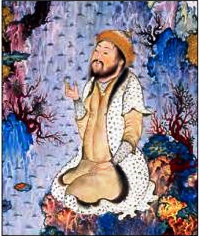Siamak on:
[Wikipedia]
[Google]
[Amazon]
 Siāmak ( fa, سیامک , sometimes transliterated as Siyamak or Siamac) is a character in
Siāmak ( fa, سیامک , sometimes transliterated as Siyamak or Siamac) is a character in
A king's book of kings: the Shah-nameh of Shah Tahmasp
an exhibition catalog from The Metropolitan Museum of Art (fully available online as PDF), which contains material on Siamak Pishdadian dynasty {{Shahnameh-stub
 Siāmak ( fa, سیامک , sometimes transliterated as Siyamak or Siamac) is a character in
Siāmak ( fa, سیامک , sometimes transliterated as Siyamak or Siamac) is a character in Shahnameh
The ''Shahnameh'' or ''Shahnama'' ( fa, شاهنامه, Šāhnāme, lit=The Book of Kings, ) is a long epic poem written by the Persian poet Ferdowsi between c. 977 and 1010 CE and is the national epic of Greater Iran. Consisting of some 50,00 ...
, the national epic
A national epic is an epic poem or a literary work of epic scope which seeks or is believed to capture and express the essence or spirit of a particular nation—not necessarily a nation state, but at least an ethnic or linguistic group with as ...
of Greater Iran
Greater Iran ( fa, ایران بزرگ, translit=Irān-e Bozorg) refers to a region covering parts of Western Asia, Central Asia, South Asia, Xinjiang, and the Caucasus, where both Culture of Iran, Iranian culture and Iranian langua ...
.
Ferdowsi
Abul-Qâsem Ferdowsi Tusi ( fa, ; 940 – 1019/1025 CE), also Firdawsi or Ferdowsi (), was a Persians, Persian poet and the author of ''Shahnameh'' ("Book of Kings"), which is one of the world's longest epic poetry, epic poems created by a sin ...
's great epic poem begins with the story of Keyumars
Keyumars or Kiomars ( fa, کیومرث) was the name of the first king (shah) of the Pishdadian dynasty of Iran according to the ''Shahnameh''.
The name appears in Avestan in the form of ''𐬔𐬀𐬌𐬌𐬊 𐬨𐬆𐬭𐬆𐬙𐬀𐬥 Gai ...
, the first king to arise among humans, who at that time lived in mountain caves and wore the skins of leopard
The leopard (''Panthera pardus'') is one of the five extant species in the genus '' Panthera'', a member of the cat family, Felidae. It occurs in a wide range in sub-Saharan Africa, in some parts of Western and Central Asia, Southern Russia, a ...
s. God ('' Hormazd'') granted him the supernatural radiance called '' farr'' reserved for kings. His son was Siāmak and was beloved by all, except the destructive spirit '' Ahriman'', who raised an army under the command of his own demonic son. When the divine figure Sorush warned Keyumars, Siāmak led an army of his own. Siāmak accepted a challenge to single combat and died at the hands of the demon.
Keyumars mourned for a year, and then Sorush advised him to fight Ahriman once more. Siāmak's son Hushang led the army that defeated Ahriman's son, whom he bound and beheaded.
Keyumars died after a thirty-year reign, leaving his throne to Hushang.
Etymology and meaning
In terms of etymology, it has been suggested that the word is a compound of ''siāh'' (Persian
Persian may refer to:
* People and things from Iran, historically called ''Persia'' in the English language
** Persians, the majority ethnic group in Iran, not to be conflated with the Iranic peoples
** Persian language, an Iranian language of the ...
: سیاه, meaning 'black') + ''moo'' (Persian: مو, meaning 'hair') + ''-ak'' (suffix of endearment in Persian), hence giving the overall meaning of "beloved black-haired boy" or simply "possessor of black hair". Other meanings have been also suggested; among others: "bringer of joy" and "great emperor".
References
External links
A king's book of kings: the Shah-nameh of Shah Tahmasp
an exhibition catalog from The Metropolitan Museum of Art (fully available online as PDF), which contains material on Siamak Pishdadian dynasty {{Shahnameh-stub